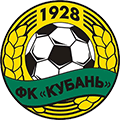Чемпионат Непала по футболу. Сборная непала по футболу
Сборная Непала по футболу. Состав, расписание матчей, новости сборной, голы, Футбол, болельщик сборной
Показывать Новости Материалы Записи в блогах Фото Видео

Авторы для Вас.

Рейтинг +8

Футбол в Бангладеш
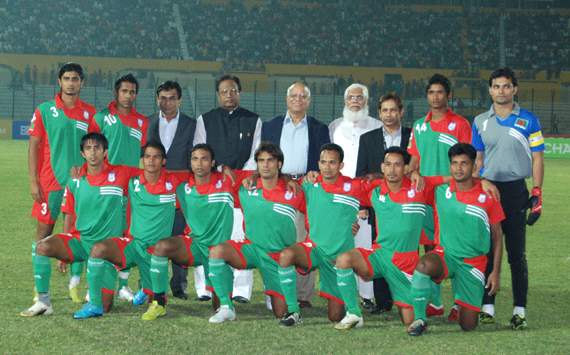
Рейтинг +7

Кто же самая сильная и самая слабая сборная из тех, кто не относится даже к футбольным середнякам Азии?
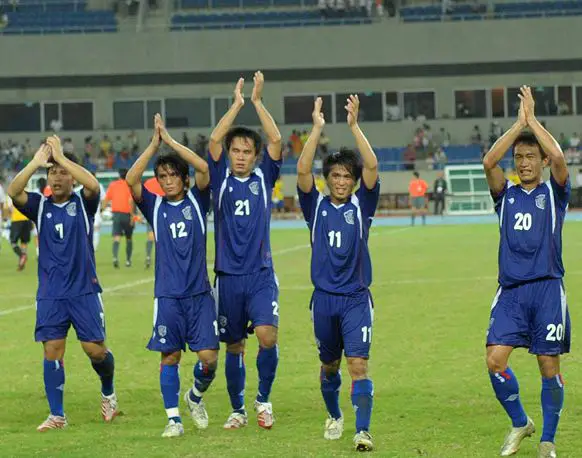
Рейтинг +9

Футбол в Шри-Ланке
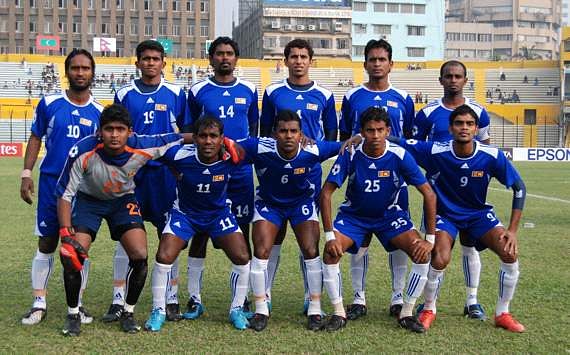
Рейтинг +10

Рейтинг +40

Итоги первого раунда отбора на ЧМ-2018 в зоне

Рейтинг +5

Первый раунд отбора к ЧМ-2018 в зоне
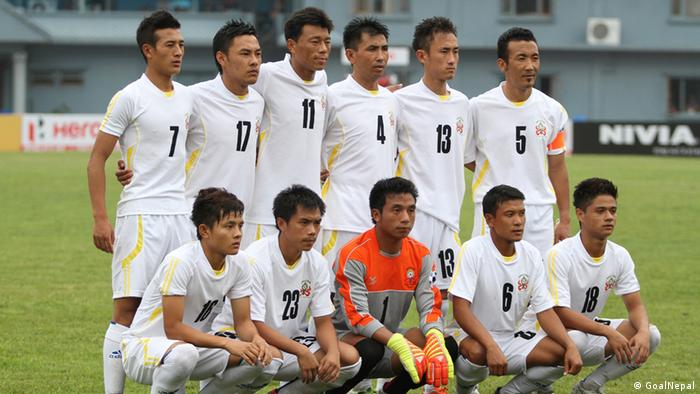
Рейтинг +9

Начинается отборочный турнир к чемпионату мира в

Рейтинг +11

Непальский вундеркинд Бимал Магар
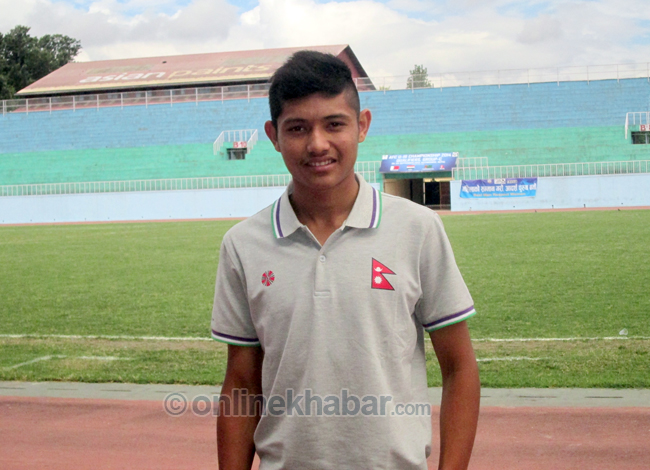
Рейтинг +8

!
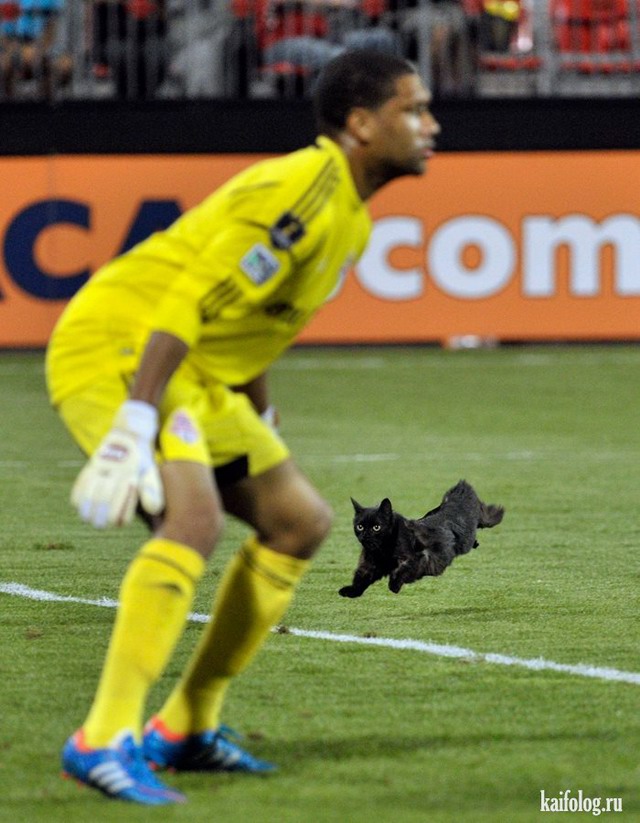
Рейтинг +7
www.sports.ru
Сборная Непала по футболу — Википедия (с комментариями)
Материал из Википедии — свободной энциклопедии
Отрывок, характеризующий Сборная Непала по футболу
– Вот так, – сказал Долохов. – И потом вот так, – сказал он, и поднял ей около головы воротник, оставляя его только перед лицом немного открытым. – Потом вот так, видишь? – и он придвинул голову Анатоля к отверстию, оставленному воротником, из которого виднелась блестящая улыбка Матреши. – Ну прощай, Матреша, – сказал Анатоль, целуя ее. – Эх, кончена моя гульба здесь! Стешке кланяйся. Ну, прощай! Прощай, Матреша; ты мне пожелай счастья. – Ну, дай то вам Бог, князь, счастья большого, – сказала Матреша, с своим цыганским акцентом. У крыльца стояли две тройки, двое молодцов ямщиков держали их. Балага сел на переднюю тройку, и, высоко поднимая локти, неторопливо разобрал вожжи. Анатоль и Долохов сели к нему. Макарин, Хвостиков и лакей сели в другую тройку. – Готовы, что ль? – спросил Балага. – Пущай! – крикнул он, заматывая вокруг рук вожжи, и тройка понесла бить вниз по Никитскому бульвару. – Тпрру! Поди, эй!… Тпрру, – только слышался крик Балаги и молодца, сидевшего на козлах. На Арбатской площади тройка зацепила карету, что то затрещало, послышался крик, и тройка полетела по Арбату. Дав два конца по Подновинскому Балага стал сдерживать и, вернувшись назад, остановил лошадей у перекрестка Старой Конюшенной. Молодец соскочил держать под уздцы лошадей, Анатоль с Долоховым пошли по тротуару. Подходя к воротам, Долохов свистнул. Свисток отозвался ему и вслед за тем выбежала горничная. – На двор войдите, а то видно, сейчас выйдет, – сказала она. Долохов остался у ворот. Анатоль вошел за горничной на двор, поворотил за угол и вбежал на крыльцо. Гаврило, огромный выездной лакей Марьи Дмитриевны, встретил Анатоля. – К барыне пожалуйте, – басом сказал лакей, загораживая дорогу от двери. – К какой барыне? Да ты кто? – запыхавшимся шопотом спрашивал Анатоль. – Пожалуйте, приказано привесть. – Курагин! назад, – кричал Долохов. – Измена! Назад! Долохов у калитки, у которой он остановился, боролся с дворником, пытавшимся запереть за вошедшим Анатолем калитку. Долохов последним усилием оттолкнул дворника и схватив за руку выбежавшего Анатоля, выдернул его за калитку и побежал с ним назад к тройке.Сборная Непала по футболу - WikiVisually
1. Азиатская конфедерация футбола – The Asian Football Confederation is the governing body of association football in Asia and Australia. Three other states located along the fringe of Asia – Cyprus, Armenia. Hong Kong and Macau, although not independent countries, are members of the AFC. One of FIFAs six continental confederations, the AFC was formed officially on 8 May 1954 in Manila, Philippines, the main headquarters is located in Kuala Lumpur, Malaysia. The current president is Sheikh Salman Bin Ibrahim Al-Khalifa of Bahrain, the Asian Football Confederation was founded on 8 May 1954. Afghanistan, Burma, Republic of China, Hong Kong, India, Israel, Indonesia, Japan, South Korea, Pakistan, Philippines, Singapore, the Asian Ladies Football Confederation is the section of the AFC who manage womens football in Asia. The group was founded in April 1968 in a meeting involving Taiwan, Hong Kong, Malaysia. In 1986 the ALFC merged with the AFC, the Asian Ladies Football Confederation helped organise the AFC Womens Asian Cup, first held in 1975, as well as the AFCs AFC U-19 Womens Championship and the AFC U-17 Womens Championship. The AFC has 47 member associations split into five regions, all three competitions are held every four years. The top-ranked AFC competition is the AFC Champions League, which started in the 2002–03 season and gathers the top 1–4 teams of each country, a second, lower-ranked competition is the AFC Cup. This competition was launched by AFC in 2004, a third competition, the AFC Presidents Cup, which had started in 2005, was absorbed into the AFC Cup in 2015. The AFC also runs an annual Asian futsal club competition, the AFC Futsal Club Championship
2. Рейтинг сборных ФИФА – The rankings were introduced in December 1992, and eight teams have held the top position, of which Brazil have spent longest ranked first. A points system is used, with points being awarded based on the results of all FIFA-recognised full international matches, the ranking system was most recently revamped after the 2006 World Cup, with the first edition of the new series of rankings issued on 12 July 2006. The most significant change is that the rankings are now based on results over the four years instead of the previous eight years. Alternative systems have been devised, such as the World Football Elo Ratings, based on the Elo rating system used in chess and Go, ranking teams. In December 1992, FIFA first published a listing in order of its member associations to provide a basis for comparison of the relative strengths of these teams. From the following August, this list was more frequently updated, significant changes were implemented in January 1999 and again in July 2006, as a reaction to criticisms of the system. Membership of FIFA has expanded from 167 to 209 since the rankings began, the ranking formula used from August 1993 until December 1998 was very simplistic and quickly became noticed for its lack of supporting factors. When the rankings were introduced, a team received one point for a draw or three for a victory in FIFA-recognised matches – much the same as a traditional league scoring system. This was a simplistic approach, however, and FIFA quickly realised that there were many factors affecting international matches. In order to meet the objective of fairly and accurately comparing the strengths of various national sides. In January 1999, FIFA introduced a system of ranking calculation. For the ranking all matches, their scores and importance were all recorded, only matches for the senior mens national team were included. Separate ranking systems were used for other national sides such as womens and junior teams. The womens rankings were, and still are, based on a procedure which is a version of the Football Elo Ratings. FIFA announced that the system would be updated following the 2006 World Cup. The evaluation period was cut from eight to four years, goals scored and home or away advantage are no longer taken into account, and other aspects of the calculations, including the importance attributed to different types of match, have been revised. The first set of revised rankings and the methodology were announced on 12 July 2006. This change is rooted at least in part in widespread criticism of the ranking system
3. Сборная Китая по футболу – The Chinese national football team, recognized as China PR by FIFA, is the national association football team of the Peoples Republic of China and is governed by the Chinese Football Association. The team is referred to as Team China, the National Team or Guózú. The team was founded in 1924 by the Republic of China, following the Chinese Civil War, the Chinese Football Association was reformed by the newly founded Peoples Republic of China. They remained affiliated with FIFA until 1958, when they withdrew, China has won the EAFF East Asian Cup twice in 2005 and 2010 and have been runners-up at the AFC Asian Cup twice in 1984 and 2004. He invited China to participate in the inaugural 1913 Far Eastern Championship Games held in the Philippines, which included association football within the schedule. To represent them it was decided that the winner of the football at the Chinese National Games in 1910 should have the honour to represent the country, once again South China Football Club, now known as South China Athletic Association won the right to represent the nation. This time in a two legged play-off against the Philippines, China won the first game 1–0 and then drew the second 0–0 to win their first ever tournament, the Chinese Football Association was founded in 1924 and then was first affiliated with FIFA in 1931. At the tournament China were knocked out within their first game at the Round of sixteen when they were beaten by Great Britain Olympic football team 2–0 on 6 August 1936. The tournament would be cancelled while Japan held their own tournament called the Anniversary of the Japanese Empire. None of games during the Second Sino-Japanese War are officially recgonized, on 2 August 1948 China competed in the Football at the 1948 Summer Olympics where they were once again knocked out in the last sixteen, this time by Turkey national football team in a 4–0 defeat. China, under the newly instated Peoples Republic of China reformed the Chinese Football Association before having FIFA acknowledge their 1931 membership on 14 June 1952. Finland who were one of the first nations to hold diplomatic relations with Chinas new government invited the country to take part in the 1952 Summer Olympics. China would soon enter their first Fifa competition when they entered the 1958 FIFA World Cup qualification process and were knocked out by Indonesia, on 7 June 1958 China stopped participating within any FIFA recognised football events when FIFA officially started to recognise Republic of China as a different country. This sparked an argument that had already seen China withdraw from the 1956 Summer Olympics for the same reasons. On 25 October 1971 the United Nations would recognise the country as the heir to the China name in their General Assembly Resolution 2758 act. In 1973 the team, which had been using the name Republic of China would rename themselves as Chinese Taipei and these acts would see China rejoin the international sporting community, first by becoming a member of the Asian Football Confederation in 1974 and by rejoining FIFA again in 1979. The 1974 Asian Games reintroduced the Chinese football team back into football while the 1976 AFC Asian Cup saw them have a relatively successful campaign where they came third. The Chinese national league restarted after being affected by the political turmoil
4. Сборная Бутана по футболу – The Bhutan national football team represents Bhutan in international mens football. The team play their games at the national stadium, Changlimithang. The side have consistently ranked as the worst, or one of the worst national teams in the world on both the official FIFA rankings and the Elo rating system. As of the end of March 2017 they have won six competitive fixtures against other international teams and have a goal difference of −263 in official matches. They are one of the national teams in the world having played their first official match in 1982 in the ANFA Cup. Prior to this, a representative team consisting mainly of imported players from India competed in a number of regional tournaments. Through the 1990s they made one international appearance, again at the South Asian Games in 1999. Their first continental appearance occurred the year when they travelled to Kuwait to take part in qualifying for the 2000 AFC Asian Cup. They were unable to build on this though and a further five straight defeats followed before their next win. This result coupled with a 0–0 draw with Mongolia was to be their most successful set of official results until their back to back victories over Sri Lanka in 2015. This would prove to be a point for Bhutanese football as they embarked on a run of nineteen straight defeats over the following five years. A week later, they earned another victory against Sri Lanka 2–1 in Thimphu, securing the qualification to the second round with an aggregate score of 3–1. In the same way there is uncertainty around the manner in which football as a sport in general came to be. Whereas Indians were introduced to football by the British government, the lack of a permanent British presence in Bhutan meant that sports were not played there. The arrival of football in Bhutan was very closely linked with the opening of schools in Haa and Paro in the 1950s, as teachers, mainly from India. In 1968, a team nominally representing Bhutan, but essentially consisting of players travelled to Calcutta to compete in the Indian Independence Cup. Over time football gradually increased in popularity until it was seen as an part of the school curriculum. Teams used to travel all over the country to take part
5. Непал – Nepal, officially the Federal Democratic Republic of Nepal, is a landlocked central Himalayan country in South Asia. Nepal is divided into 7 provinces and 75 districts and 744 local units including 4 metropolises,13 sub-metropolises,246 municipal councils and 481 village and it has a population of 26.4 million and is the 93rd largest country by area. Bordering China in the north and India in the south, east, Nepal does not border Bangladesh, which is located within only 27 km of its southeastern tip. It neither borders Bhutan due to the Indian state of Sikkim being located in between, Nepal has a diverse geography, including fertile plains, subalpine forested hills, and eight of the worlds ten tallest mountains, including Mount Everest, the highest point on Earth. Kathmandu is the capital and largest city. It is a nation with Nepali as the official language. The territory of Nepal has a history since the Neolithic age. The name Nepal is first recorded in texts from the Vedic Age, the era which founded Hinduism, in the middle of the first millennium BCE, Gautama Buddha, the founder of Buddhism, was born in southern Nepal. Parts of northern Nepal were intertwined with the culture of Tibet, the Kathmandu Valley in central Nepal became known as Nepal proper because of its complex urban civilization. It was the seat of the prosperous Newar confederacy known as Nepal Mandala, the Himalayan branch of the ancient Silk Road was dominated by the valleys traders. The cosmopolitan region developed distinct traditional art and architecture, by the 18th century, the Gorkha Kingdom achieved the unification of Nepal. The Shah dynasty established the Kingdom of Nepal and later formed an alliance with the British Empire, the country was never colonized but served as a buffer state between Imperial China and Colonial India. In the 20th century, Nepal ended its isolation and forged ties with regional powers. Parliamentary democracy was introduced in 1951, but was suspended by Nepalese monarchs in 1960 and 2005. The Nepalese Civil War resulted in the proclamation of a republic in 2008, modern Nepal is a federal secular parliamentary republic. Nepal is a nation, ranking 144th on the Human Development Index in 2016. The country struggles with the transition from a monarchy to a republic and it also suffers from high levels of hunger and poverty. Despite these challenges, Nepal is making progress, with the government declaring its commitment to elevate the nation from least developed country status by 2022
6. Инчхон – Incheon, officially the Incheon Metropolitan City, is a city located in northwestern South Korea, bordering Seoul and Gyeonggi to the east. Inhabited since the New Stone Age, Incheon was home to just 4,700 people when it became a port in 1883. Today, about 3 million people live in the city, making it Korea’s third most populous city after Seoul and Busan. The citys growth has been assured in modern times with the development of its due to its natural advantages as a coastal city. It is part of the Seoul Capital Area, along with Seoul itself and Gyeonggi Province, Incheon has since led the economic development of Korea by opening its port to the outside world, ushering in the modernization of Korea as a center of industrialization. In 2003, the city was designated as Korea’s first free economic zone, as an international city, Incheon has held numerous large scale international conferences, such as the Incheon Global Fair & Festival in 2009. The 17th Asian Games Incheon 2014 was also held in Incheon on 19 September 2014, Incheon has established itself as a major transportation hub in northeast Asia with the world-renowned Incheon International Airport and Incheon Port. The city is home to the Green Climate Fund, an international organization addressing environmental issues. The first historical record of the Incheon area dates back to 475 AD, during the reign of King Jangsu of Goguryeo, by the name of Michuhol, the area underwent several name changes with successive kingdoms and dynasties. In Goryeo era, Incheon was called Gyeongwon or Inju, the current name was turned to Incheon in 1413. Later, Incheon County became Incheon Metropolitan Prefecture, old Incheon consisted of todays southern Incheon and northern part of Siheung City. The city centre was Gwangyo-dong, where the office and the local academy were located. Another historical name of the city, Jemulpo, was not widely used until the opening of the port in 1883, after the opening of the Incheon port, the city centre moved from Gwangyo to Jemulpo. Today, either Jemulpo or Gwangyo-dong is considered Deep Incheon and it was renamed as Jinsen during Japanese rule in Korean peninsula. In 1914, the Japanese colonial government merged outer parts of old Incheon with Bupyeong County, through 1936 and 1940, some part of Bucheon County was recombined into Incheon City, by which some part of old Bupyeong was annexed into Incheon. Incheon was originally part of Gyeonggi Province, but was granted Directly Governed City status on July 1,1981, Incheon was known as Inchon prior to South Koreas adoption of a new Romanization system in 2000. The city was the site of the Battle of Chemulpo Bay, during the Korean War, Incheon was occupied by North Korean troops on 4 September 1950. Eleven days later, Incheon was the site of the Battle of Inchon, the result was a decisive UN victory and it was recaptured on 19 September 1950
7. Футбол – Association football, more commonly known as football or soccer, is a team sport played between two teams of eleven players with a spherical ball. It is played by 250 million players in over 200 countries and dependencies making it the worlds most popular sport, the game is played on a rectangular field with a goal at each end. The object of the game is to score by getting the ball into the opposing goal, players are not allowed to touch the ball with their hands or arms while it is in play, unless they are goalkeepers. Other players mainly use their feet to strike or pass the ball, the team that scores the most goals by the end of the match wins. If the score is level at the end of the game, the Laws of the Game were originally codified in England by The Football Association in 1863. Association football is governed internationally by the International Federation of Association Football, the first written reference to the inflated ball used in the game was in the mid-14th century, Þe heued fro þe body went, Als it were a foteballe. The Online Etymology Dictionary states that the word soccer was split off in 1863, according to Partha Mazumdar, the term soccer originated in England, first appearing in the 1880s as an Oxford -er abbreviation of the word association. Within the English-speaking world, association football is now usually called football in the United Kingdom and mainly soccer in Canada and the United States. People in Australia, Ireland, South Africa and New Zealand use either or both terms, although national associations in Australia and New Zealand now primarily use football for the formal name. According to FIFA, the Chinese competitive game cuju is the earliest form of football for which there is scientific evidence, cuju players could use any part of the body apart from hands and the intent was kicking a ball through an opening into a net. It was remarkably similar to football, though similarities to rugby occurred. During the Han Dynasty, cuju games were standardised and rules were established, phaininda and episkyros were Greek ball games. An image of an episkyros player depicted in low relief on a vase at the National Archaeological Museum of Athens appears on the UEFA European Championship Cup, athenaeus, writing in 228 AD, referenced the Roman ball game harpastum. Phaininda, episkyros and harpastum were played involving hands and violence and they all appear to have resembled rugby football, wrestling and volleyball more than what is recognizable as modern football. As with pre-codified mob football, the antecedent of all football codes. Non-competitive games included kemari in Japan, chuk-guk in Korea and woggabaliri in Australia, Association football in itself does not have a classical history. Notwithstanding any similarities to other games played around the world FIFA have recognised that no historical connection exists with any game played in antiquity outside Europe. The modern rules of football are based on the mid-19th century efforts to standardise the widely varying forms of football played in the public schools of England
8. Чемпионат мира по футболу 1930 – The 1930 FIFA World Cup was the inaugural FIFA World Cup, the world championship for mens national association football teams. It took place in Uruguay from 13 July to 30 July 1930, all matches were played in the Uruguayan capital, Montevideo, the majority at the Estadio Centenario, which was built for the tournament. Few European teams chose to participate because of the difficulty of travelling to South America, the teams were divided into four groups, with the winner of each group progressing to the semi-finals. The first two World Cup matches took place simultaneously, and were won by France and the United States, Lucien Laurent of France scored the first goal in World Cup history, while American goalkeeper Jimmy Douglas posted the first official clean sheet in the tournament. Argentina, Uruguay, the United States and Yugoslavia each won their groups to qualify for the semi-finals. In the final, hosts and pre-tournament favourites Uruguay defeated Argentina 4–2 in front of a crowd of 93,000 people, italy, Sweden, the Netherlands, Spain, Hungary and Uruguay all lodged applications to host the event. Uruguays bid became the clear selection after all the other countries withdrew their bids, the first World Cup was the only one without qualification. Every country affiliated with FIFA was invited to compete, and given a deadline of 28 February 1930 to accept, plenty of interest was shown by nations in the Americas, Argentina, Brazil, Bolivia, Chile, Mexico, Paraguay, Peru and the United States all entered. A total of seven South American teams participated, more than in any subsequent World Cup Finals. However, because of the long and costly trip by ship across the Atlantic Ocean, some refused to countenance travel to South America in any circumstances, and no European entries were received before the February deadline. This was rejected by the FA Committee on 18 November 1929, two months before the start of the tournament, no team from Europe had officially entered. FIFA president Jules Rimet intervened, and eventually four European teams made the trip by sea, Belgium, France, Romania, and Yugoslavia. The Romanians, managed by Constantin Rădulescu and coached by their captain Rudolf Wetzer and Octav Luchide and he selected the squad personally, and negotiated with employers to ensure that the players would still have jobs upon their return. The French entered at the intervention of Rimet, but neither Frances star defender Manuel Anatol nor the teams regular coach Gaston Barreau could be persuaded to make the trip. The Belgians participated at the instigation of German-Belgian FIFA vice-president Rodolphe Seeldrayers, the Romanians boarded the SS Conte Verde at Genoa, the French were picked up at Villefranche-sur-Mer on 21 June 1930, and the Belgians embarked at Barcelona. The Conte Verde carried Rimet, the trophy and the three designated European referees, the Belgians Jean Langenus and Henri Christophe, along with Thomas Balway, a Parisian who may have been English. The Brazilian team were picked up when the boat docked in Rio de Janeiro on 29 June before arriving in Uruguay on 4 July, Yugoslavia travelled via the mail steamship Florida from Marseille. In the Kingdom of Yugoslavia there were doubts about their participation at first, since the Croatians decided to boycott the national team, King Alexander I did not want to finance the whole idea, but in the end they found a solution
9. Чемпионат мира по футболу 1982 – The 1982 FIFA World Cup, the 12th FIFA World Cup, was held in Spain from 13 June to 11 July 1982. The tournament was won by Italy, after defeating West Germany 3–1 in the final in the Spanish capital of Madrid and it was Italys third World Cup win and first since 1938. The holders Argentina were eliminated in the group round. Algeria, Cameroon, Honduras, Kuwait and New Zealand made their first appearances in the finals, in the first round of Group 3, Hungary defeated El Salvador 10–1, equalling the largest margin of victory ever recorded in the finals. Spain was chosen as the host nation by FIFA in London, hosting rights for the 1974 and 1978 tournaments were awarded at the same time. West Germany agreed a deal with Spain by which Spain would support West Germany for the 1974 tournament, for the first time, the World Cup finals expanded from 16 to 24 teams. This allowed more teams to participate, especially from Africa and Asia, teams absent from the finals were 1974 and 1978 runners-up Netherlands, Mexico, and the three times 1970s participants Sweden. Northern Ireland qualified for the first time since 1958, Belgium, Czechoslovakia, El Salvador, England, and the Soviet Union were back in the Finals after a 12-year absence. Yugoslavia were also back after having missed the 1978 tournament, Algeria, Cameroon, Honduras, Kuwait, and New Zealand all participated in the World Cup for the first time. As of 2014, this was the last time that El Salvador, Kuwait, there was some consideration given as to whether England, Northern Ireland and Scotland should withdraw from the tournament due to the Falklands War between Argentina and the United Kingdom. A directive issued by the British sports minister Neil Macfarlane in April, at the start of the conflict and this directive was not rescinded until August, following the end of hostilities. Macfarlane reported to Prime Minister Margaret Thatcher that some players and officials were uneasy about participating due to the casualties being suffered by British forces, FIFA advised the British Government that there was no prospect of Argentina being asked to withdraw. It also became apparent that no other countries would withdraw from the tournament, the 1982 competition used a unique format. The first round was a group stage containing six groups of four teams each. Two points were awarded for a win and one for a draw, the top two teams in each group advanced. In the second round, the remaining teams were split into four groups of three teams each, with the winner of each group progressing to the knockout semi-final stage. The composition of the groups in the round was predetermined before the start of the tournament. In the aggregate, Groups A and B were to one team from each of Groups 1 through 6
10. Чемпионат мира по футболу 1986 – The 1986 FIFA World Cup, the 13th FIFA World Cup, was held in Mexico from 31 May to 29 June 1986. The tournament was the second to feature a 24-team format, Mexico was selected as the new host in May 1983. This was the third FIFA World Cup tournament in succession that was hosted by a Hispanophonic country, in addition to Spain hosting in 1982, Argentina was captained by the 25-year old Diego Maradona, who played a large part in his teams success. Maradona scored the Hand of God goal, as well as another voted Goal of the Century and these were two of the five goals that Maradona scored during the tournament, and he also created another five for his team-mates. Argentina beat West Germany 3–2 in the final at Mexico Citys Estadio Azteca, total attendance was 2,394,031, an average per match of 46,039. Canada, Denmark and Iraq made their first appearances at the final stage, the 1986 World Cup saw the appearance of the phenomenon dubbed the Mexican wave, which was popularised worldwide after featuring during the tournament. The format of the changed from 1982, with the second round being played on a knock-out basis rather than groups. The 24 teams qualified were divided into six groups of four, the top two teams and the four best third-place finishers from the six groups advanced to the knockout round of 16 teams. Colombia was originally chosen as hosts by FIFA in June 1974, however, the Colombian authorities eventually declared in November 1982 that they could not afford to host the World Cup under the terms that FIFA demanded because of economic concerns. Mexico was selected on 20 May 1983 as the replacement hosts, beating the bids of Canada and the United States and this second World Cup in Mexico came 16 years after the first one in 1970. For the design of the logo an unofficial motto was adopted, the official mascot of the 1986 World Cup was Pique, a jalapeño pepper, characteristic of Mexican cuisine, with a moustache, a Colimote sombrero, and Mexican football team colours. Its name comes from picante, Spanish for spicy peppers and sauces, the character caused a degree of controversy within Mexico for its ethnic stereotypes. Three teams qualified for the World Cup for the first time, Canada, Denmark, Canada clinched its spot after winning the final match against Honduras 2–1 in St. Johns, Newfoundland. Iraq played all their matches on neutral ground because of the Iran–Iraq War. South Korea qualified for the first time since 1954, Paraguay for the first time since 1958, as of 2016, this was the last time that Hungary, Canada, Iraq and Northern Ireland qualified for the finals. The Azteca Stadium in Mexico City, the largest stadium used for the tournament, hosted 9 matches, Mexico City hosted 13 total matches, the Olimpico Universitario Stadium hosted 4 matches. The Jalisco Stadium in Guadalajara hosted 7 matches, and the Cuauhtémoc Stadium in Puebla hosted 5 matches, all of the venues listed hosted knockout round matches except the ones in Nezahualcoyotl, Irapuato, Zapopan, Toluca and the Estadio Tecnologico in Monterrey. Morocco and Portugal played in Guadalajara while Spain and Algeria played in Monterrey, for a list of all squads that appeared in the final tournament, see 1986 FIFA World Cup squads
wikivisually.com
Сборная Непала по футболу - Gpedia, Your Encyclopedia
Текущая версия страницы пока не проверялась опытными участниками и может значительно отличаться от версии, проверенной 11 декабря 2016; проверки требуют 7 правок.
 Текущая версия страницы пока не проверялась опытными участниками и может значительно отличаться от версии, проверенной 11 декабря 2016; проверки требуют 7 правок. Перейти к навигации Перейти к поиску
Текущая версия страницы пока не проверялась опытными участниками и может значительно отличаться от версии, проверенной 11 декабря 2016; проверки требуют 7 правок. Перейти к навигации Перейти к поиску Сбо́рная Непа́ла по футбо́лу — команда, которая представляет Непал на футбольных матчах и чемпионатах. Контролируется Футбольной федерацией Непала. Является одной из слабейших сборных планеты. Наивысшего успеха сборная добилась в 1993 году, завоевав бронзовые медали в розыгрыше кубка федерации Южной Азии по футболу. Проводит свои домашние матчи на стадионе «Дасаратх Рангасала».
Чемпионат мира
- 1930 — 1982 — не участвовала
- 1986 — не прошла квалификацию
- 1990 — не прошла квалификацию
- 1994 — не участвовала
- 1998 — не прошла квалификацию
- 2002 — не прошла квалификацию
- 2006 — отозвала заявку на участие
- 2010 — 2018 — не прошла квалификацию
Кубок Азии
- 1956 — 1980 — не участвовала
- 1984 — не прошла квалификацию
- 1988 — не прошла квалификацию
- 1992 — не участвовала
- 1996 — 2004 — не прошла квалификацию
- 2007 — не участвовала
- 2011 — 2019 — не прошла квалификацию
Азиатский Кубок Вызова
- 2006 — полуфинал
- 2008 — групповой этап
- 1993 — третье место [1]
- 1995 — полуфинал
- 1997 — первый раунд
- 1999 — четвёртое место
- с 2003 по 2005 — первый раунд
- 2008 — групповой раунд
Тренеры
Примечания
Ссылки
www.gpedia.com
Чемпионат Непала по футболу - это... Что такое Чемпионат Непала по футболу?
| शहीद स्मारक ए डिभिजन लीगMartyr's Memorial A-Division League | |
|
| |
| 1954 | |
| 10 | |
| Кубок Президента АФК | |
| Непал Полис | |
 Сезон 2012 Сезон 2012 | |
Martyr's Memorial Red Bull 'A' Division League (непальский: ए डिभिजन शहीद स्मारक लीग) — высший футбольный турнир Непала.
Разыгрываемый 10-ю клубов, проходит по системе осень-весна. Победитель получает право сыграть в Кубке президента АФК. Занявший последнее место клуб вылетает в Лигу B.Текущий сезон
| 1 | Непал Полис | 9 | 6 | 3 | 0 | 14 − 3 | +11 | 21 |
| 2 | Himalayan Sherpa | 9 | 6 | 1 | 2 | 14 − 8 | +6 | 19 |
| 3 | Мананг Маршиангди | 9 | 5 | 2 | 2 | 17 − 6 | +11 | 17 |
| 4 | Джолахел | 9 | 5 | 1 | 3 | 11 − 9 | +2 | 16 |
| 5 | Непал Арми | 9 | 4 | 1 | 4 | 16 − 9 | +7 | 13 |
| 6 | Три Старз | 9 | 3 | 4 | 2 | 11 − 6 | +5 | 13 |
| 7 | Рани-Покхари | 9 | 4 | 1 | 4 | 11 − 8 | +3 | 13 |
| 8 | Нью Роуд Тим | 9 | 3 | 2 | 4 | 7 − 9 | −2 | 11 |
| 9 | Sangam Club | 9 | 1 | 0 | 8 | 8 − 30 | −22 | 3 |
| 10 | Mitra Milan | 9 | 0 | 1 | 8 | 8 − 29 | −21 | 1 |
| Чемпион Вылет в нижний дивизион Источник данных: soccerway.comОбновлено 11 декабря 2012 года | ||||||||
Региональное распределение команд


Непал Полис
Расположение команд чемпионата Непала по футболу 2012
См. также
Ссылки
biograf.academic.ru
Чемпионат Непала по футболу - это... Что такое Чемпионат Непала по футболу?
| शहीद स्मारक ए डिभिजन लीगMartyr's Memorial A-Division League | |
|
| |
| 1954 | |
| 10 | |
| Кубок Президента АФК | |
| Непал Полис | |
 Сезон 2012 Сезон 2012 | |
Martyr's Memorial Red Bull 'A' Division League (непальский: ए डिभिजन शहीद स्मारक लीग) — высший футбольный турнир Непала.
Разыгрываемый 10-ю клубов, проходит по системе осень-весна. Победитель получает право сыграть в Кубке президента АФК. Занявший последнее место клуб вылетает в Лигу B.Текущий сезон
| 1 | Непал Полис | 9 | 6 | 3 | 0 | 14 − 3 | +11 | 21 |
| 2 | Himalayan Sherpa | 9 | 6 | 1 | 2 | 14 − 8 | +6 | 19 |
| 3 | Мананг Маршиангди | 9 | 5 | 2 | 2 | 17 − 6 | +11 | 17 |
| 4 | Джолахел | 9 | 5 | 1 | 3 | 11 − 9 | +2 | 16 |
| 5 | Непал Арми | 9 | 4 | 1 | 4 | 16 − 9 | +7 | 13 |
| 6 | Три Старз | 9 | 3 | 4 | 2 | 11 − 6 | +5 | 13 |
| 7 | Рани-Покхари | 9 | 4 | 1 | 4 | 11 − 8 | +3 | 13 |
| 8 | Нью Роуд Тим | 9 | 3 | 2 | 4 | 7 − 9 | −2 | 11 |
| 9 | Sangam Club | 9 | 1 | 0 | 8 | 8 − 30 | −22 | 3 |
| 10 | Mitra Milan | 9 | 0 | 1 | 8 | 8 − 29 | −21 | 1 |
| Чемпион Вылет в нижний дивизион Источник данных: soccerway.comОбновлено 11 декабря 2012 года | ||||||||
Региональное распределение команд


Непал Полис
Расположение команд чемпионата Непала по футболу 2012
См. также
Ссылки
dik.academic.ru
Чемпионат Непала по футболу - это... Что такое Чемпионат Непала по футболу?
| शहीद स्मारक ए डिभिजन लीगMartyr's Memorial A-Division League | |
|
| |
| 1954 | |
| 10 | |
| Кубок Президента АФК | |
| Непал Полис | |
 Сезон 2012 Сезон 2012 | |
Martyr's Memorial Red Bull 'A' Division League (непальский: ए डिभिजन शहीद स्मारक लीग) — высший футбольный турнир Непала.
Разыгрываемый 10-ю клубов, проходит по системе осень-весна. Победитель получает право сыграть в Кубке президента АФК. Занявший последнее место клуб вылетает в Лигу B.Текущий сезон
| 1 | Непал Полис | 9 | 6 | 3 | 0 | 14 − 3 | +11 | 21 |
| 2 | Himalayan Sherpa | 9 | 6 | 1 | 2 | 14 − 8 | +6 | 19 |
| 3 | Мананг Маршиангди | 9 | 5 | 2 | 2 | 17 − 6 | +11 | 17 |
| 4 | Джолахел | 9 | 5 | 1 | 3 | 11 − 9 | +2 | 16 |
| 5 | Непал Арми | 9 | 4 | 1 | 4 | 16 − 9 | +7 | 13 |
| 6 | Три Старз | 9 | 3 | 4 | 2 | 11 − 6 | +5 | 13 |
| 7 | Рани-Покхари | 9 | 4 | 1 | 4 | 11 − 8 | +3 | 13 |
| 8 | Нью Роуд Тим | 9 | 3 | 2 | 4 | 7 − 9 | −2 | 11 |
| 9 | Sangam Club | 9 | 1 | 0 | 8 | 8 − 30 | −22 | 3 |
| 10 | Mitra Milan | 9 | 0 | 1 | 8 | 8 − 29 | −21 | 1 |
| Чемпион Вылет в нижний дивизион Источник данных: soccerway.comОбновлено 11 декабря 2012 года | ||||||||
Региональное распределение команд


Непал Полис
Расположение команд чемпионата Непала по футболу 2012
См. также
Ссылки
dal.academic.ru

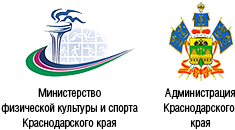
 Непал
Непал Непал
Непал Непал
Непал







